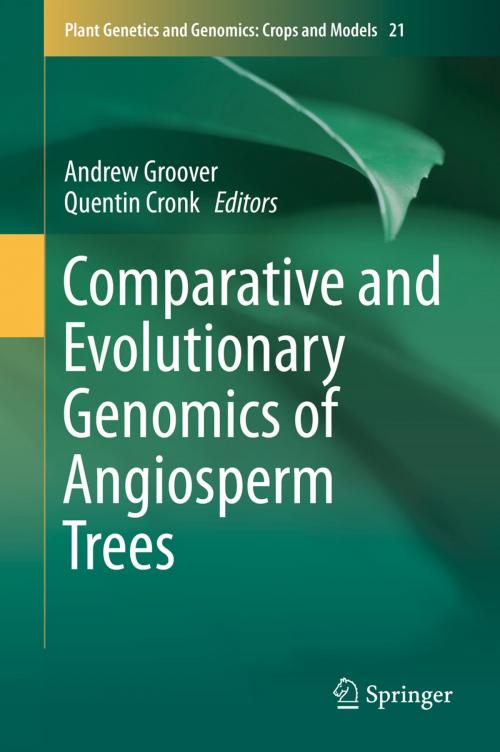Comparative and Evolutionary Genomics of Angiosperm Trees
Nonfiction, Science & Nature, Nature, Plant Life, Trees, Science, Biological Sciences, Botany| Author: | ISBN: | 9783319493299 | |
| Publisher: | Springer International Publishing | Publication: | November 21, 2017 |
| Imprint: | Springer | Language: | English |
| Author: | |
| ISBN: | 9783319493299 |
| Publisher: | Springer International Publishing |
| Publication: | November 21, 2017 |
| Imprint: | Springer |
| Language: | English |
Marking the change in focus of tree genomics from single species to comparative approaches, this book covers biological, genomic, and evolutionary aspects of angiosperm trees that provide information and perspectives to support researchers broadening the focus of their research. The diversity of angiosperm trees in morphology, anatomy, physiology and biochemistry has been described and cataloged by various scientific disciplines, but the molecular, genetic, and evolutionary mechanisms underlying this diversity have only recently been explored. Excitingly, advances in genomic and sequencing technologies are ushering a new era of research broadly termed comparative genomics, which simultaneously exploits and describes the evolutionary origins and genetic regulation of traits of interest. Within tree genomics, this research is already underway, as the number of complete genome sequences available for angiosperm trees is increasing at an impressive pace and the number of species for which RNAseq data are available is rapidly expanding. Because they are extensively covered by other literature and are rapidly changing, technical and computational approaches—such as the latest sequencing technologies—are not a main focus of this book. Instead, this comprehensive volume provides a valuable, broader view of tree genomics whose relevance will outlive the particulars of current-day technical approaches.
The first section of the book discusses background on the evolution and diversification of angiosperm trees, as well as offers description of the salient features and diversity of the unique physiology and wood anatomy of angiosperm trees. The second section explores the two most advanced model angiosperm tree species (poplars and eucalypts) as well as species that are soon to emerge as new models. The third section describes the structural features and evolutionary histories of angiosperm tree genomes, followed by a fourth section focusing on the genomics of traits of biological, ecological, and economic interest. In summary, this book is a timely and well-referenced foundational resource for the forest tree community looking to embrace comparative approaches for the study of angiosperm trees.
Marking the change in focus of tree genomics from single species to comparative approaches, this book covers biological, genomic, and evolutionary aspects of angiosperm trees that provide information and perspectives to support researchers broadening the focus of their research. The diversity of angiosperm trees in morphology, anatomy, physiology and biochemistry has been described and cataloged by various scientific disciplines, but the molecular, genetic, and evolutionary mechanisms underlying this diversity have only recently been explored. Excitingly, advances in genomic and sequencing technologies are ushering a new era of research broadly termed comparative genomics, which simultaneously exploits and describes the evolutionary origins and genetic regulation of traits of interest. Within tree genomics, this research is already underway, as the number of complete genome sequences available for angiosperm trees is increasing at an impressive pace and the number of species for which RNAseq data are available is rapidly expanding. Because they are extensively covered by other literature and are rapidly changing, technical and computational approaches—such as the latest sequencing technologies—are not a main focus of this book. Instead, this comprehensive volume provides a valuable, broader view of tree genomics whose relevance will outlive the particulars of current-day technical approaches.
The first section of the book discusses background on the evolution and diversification of angiosperm trees, as well as offers description of the salient features and diversity of the unique physiology and wood anatomy of angiosperm trees. The second section explores the two most advanced model angiosperm tree species (poplars and eucalypts) as well as species that are soon to emerge as new models. The third section describes the structural features and evolutionary histories of angiosperm tree genomes, followed by a fourth section focusing on the genomics of traits of biological, ecological, and economic interest. In summary, this book is a timely and well-referenced foundational resource for the forest tree community looking to embrace comparative approaches for the study of angiosperm trees.















